Burma Rave
By Naperville Magazine
October 2023 View more Table for Two
By Phil Vettel
Pa Lian puts Burmese cuisine on the map
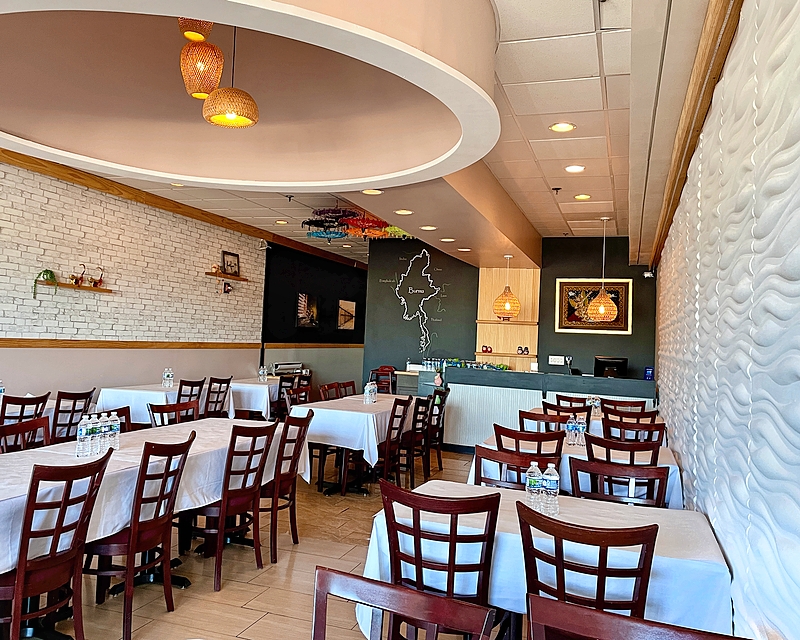
If you’ve never tried Burmese food, don’t feel bad; after all, there are maybe two Burmese restaurants in the entire state.
On the other hand, one of them has been operating in Wheaton for five years. So when you make your first visit, as I did a few weeks ago, your reaction might be the same as mine, to wit: What took me so long?
Pa Lian is cute, warm, and welcoming. The food uses ingredients familiar enough to prevent intimidation but in combinations distinct enough to give diners at least a glimpse of the exotic. Vegan and gluten-free dishes abound on the long menu; it’s a healthy eater’s paradise.
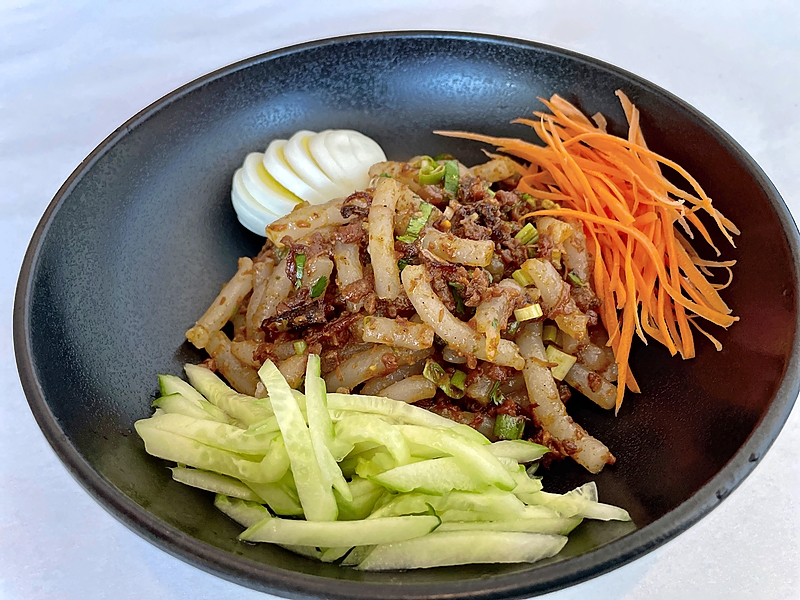
Owner and chef Tawk Zalian sees his restaurant as a manifestation of the American dream. “We came here, and saw that in Chicagoland, there is no Burmese cuisine,” he says. “We love to cook, love to eat, and so we thought, ‘Why not bring our food to Chicagoland?’ ”
Myanmar (the country formerly known as Burma) counts India, China, and Thailand among its neighbors, and the culinary similarities are strong. For example, appetizers include samosas—triangular pastry shells stuffed with potatoes, egg, and shredded chicken. They’re identical in most respects to Indian samosas, except for the dipping sauces; Indian restaurants will provide red and green chutneys, while Burmese samosas are served with a sour and spicy dip (think sweet-and-sour sauce with a kick).
The menu also features spring rolls—deep-fried rolls filled with rice noodles, shredded cabbage and thin carrot strips. These crunchy, crispy bites would be at home in any Thai restaurant.
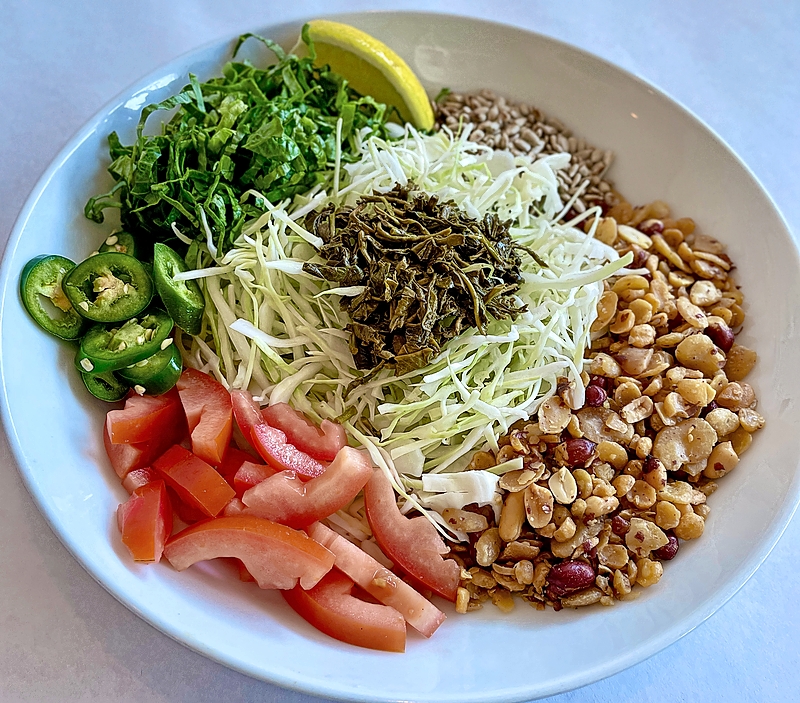
If you’re looking for more distinctive flavors—and you should consider doing so—start with the tea-leaf salad, a blend of fermented tea leaves, lentils, peanuts, beans (fava and yellow beans), tomatoes, fried garlic, and lime juice. It’s a dish that is uniquely Burmese, and, Zalian promises, “It’s a party in your mouth.”
From there, move on to Burmese tofu, which the restaurant makes daily. Burmese tofu is made from chickpeas, which give it a nuttier flavor than the more familiar soy-milk-based tofu. Try it in a salad with fried onions and Burmese dressing (ginger, onion, and garlic are the dressing’s dominant flavors) or as an appetizer of fried tofu.
That same Burmese dressing flavors the squid salad, which also includes tomatoes, shredded cabbage, and shallots. There’s a little chile in this dish; I didn’t find it particularly hot, but one of my companions noticed the heat right away. Your mileage may vary.
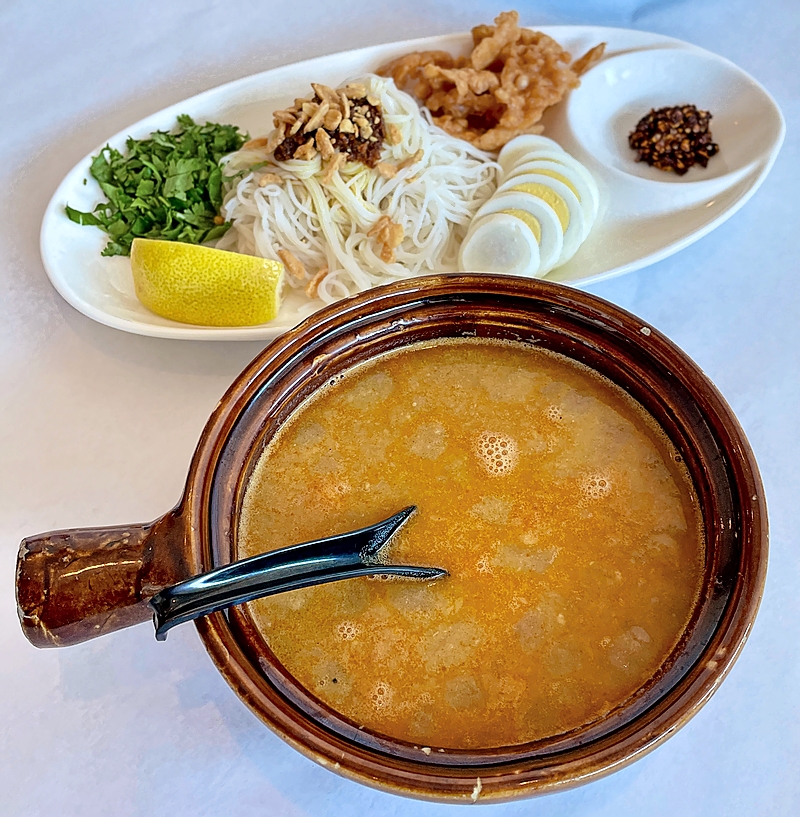
Moh-Hin-Gar is Myanmar’s national dish, and it’s a must-try. It’s a catfish curry with vermicelli noodles, crispy lentils, and flavors of lemongrass and ginger. It’s a very mild dish, though chile powder is served on the side for the adventurous.
Shrimp curry is a keeper, albeit a messy one. The shrimp are simmered in their shell (shrimp-lovers will tell you that’s the only way to do it) in a curry sauce fragrant with onion, garlic, and ginger, and so thick it could pass for gravy. (If you haven’t placed a side order of rice, now would be a good time to request some.)
Two other noodle dishes of note are the nangyi dok, udon noodles tossed in that reliable Burmese dressing with shredded chicken curry, green onions, fried onions, and chickpea powder, garnished with hard-boiled eggs; and the kyarzan thoke, which combines rice vermicelli with cabbage, onions, and more. Its offered as a vegan and gluten-free dish, but the kitchen will happily add chicken or beef on request (for a modest surcharge).
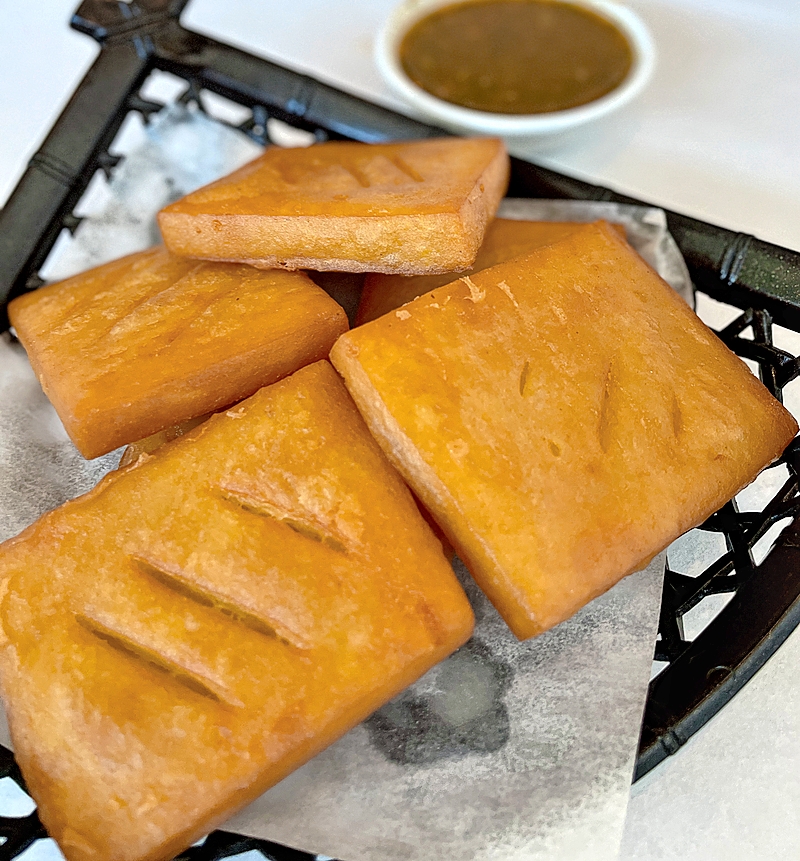
The dining room is pretty, set with four-seat tables topped with white linen and butcher paper. Walls are brick-lined on one end, tile-covered on the opposite side. Art consists of a few framed paintings or photos, a few shelves holding knickknacks, and colorful parasols hanging upside down from the ceiling.
The restaurant doesn’t have a liquor license—perhaps in the future, Zalian says—but for now, customers may bring their own beer and wine, and there is no corkage fee. (More affordability.)
Carryout is technically available, but Zalian isn’t fond of it, preferring to focus on in-house dining, which he believes showcases his food best. The online-ordering link on the restaurant’s website flat-out doesn’t work, and while you can call and request carryout, Zalian will fulfill only a few orders per day. “We’re a small family team,” he explains. “We want to focus on the quality.”
Photos: Jen Banowetz


